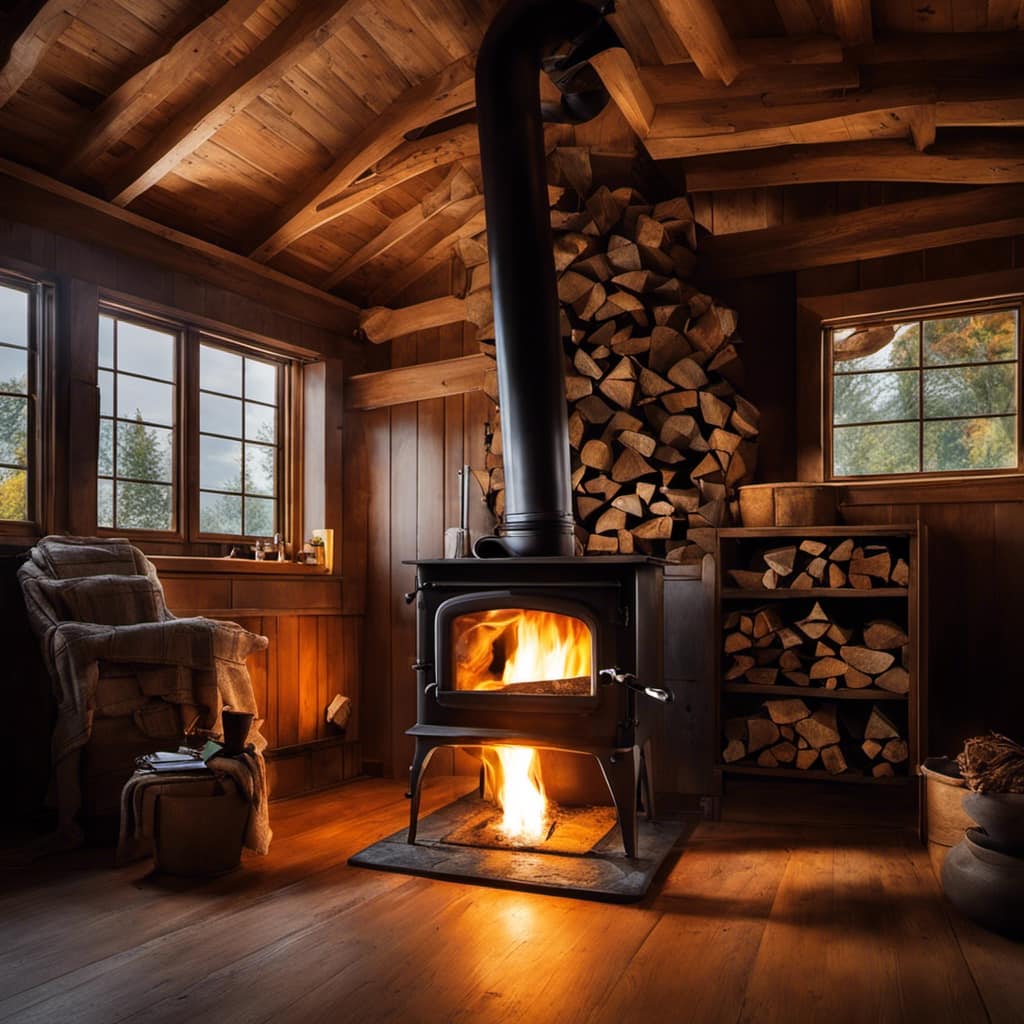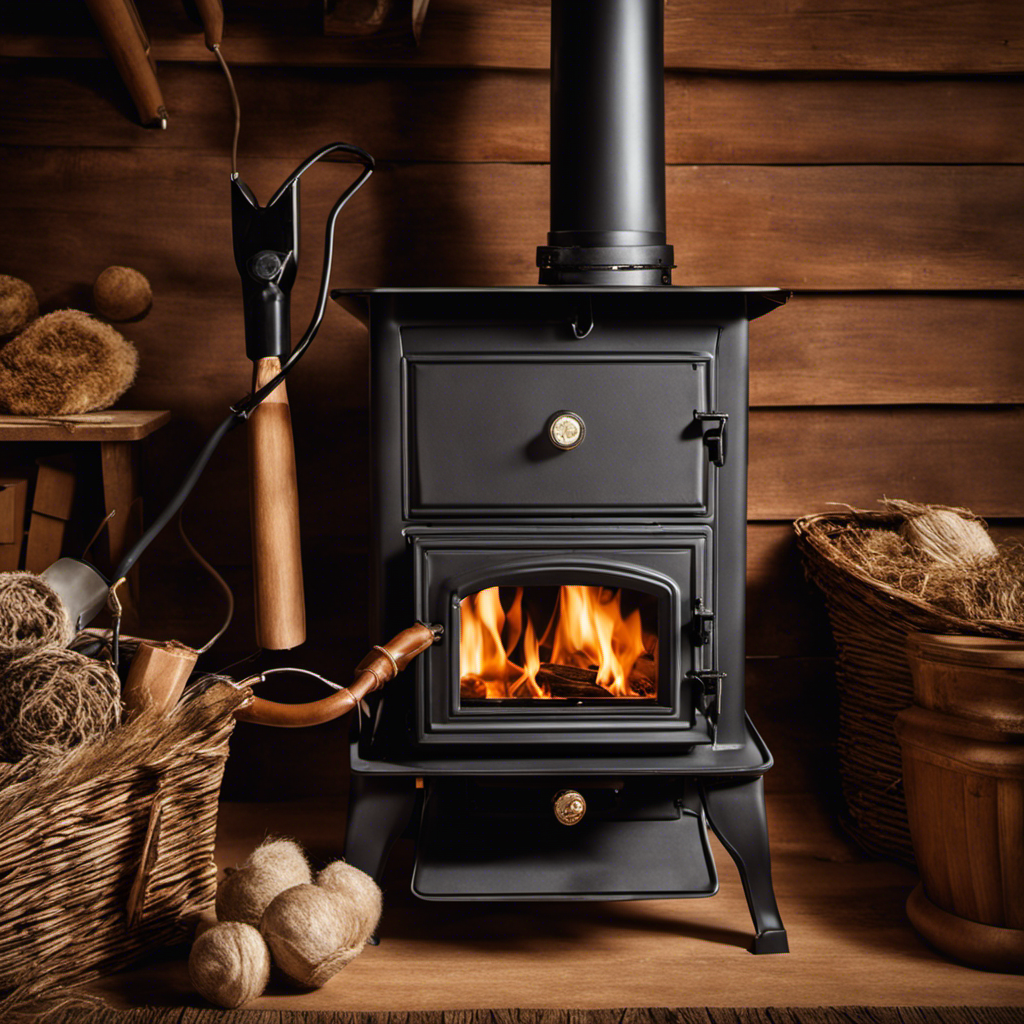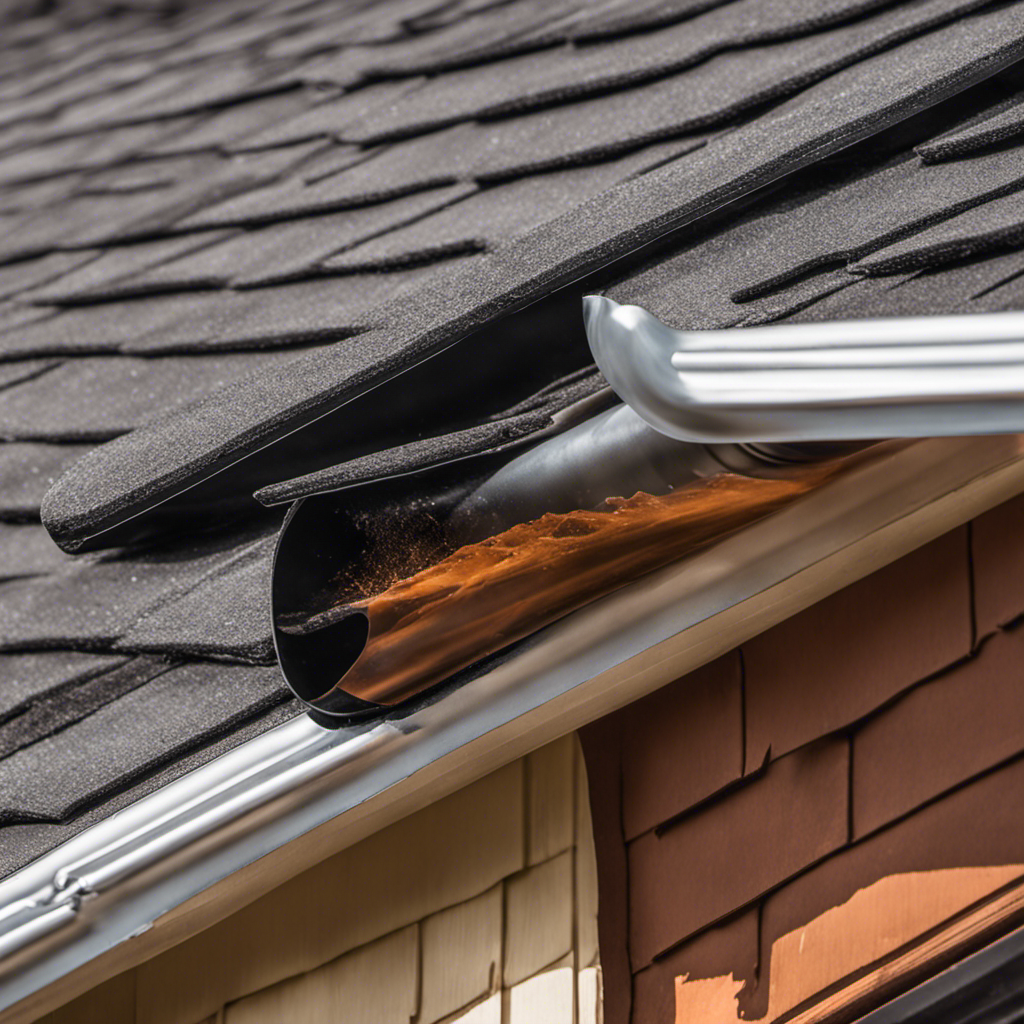I have discovered through my extensive experience with wood stoves that determining the optimal burning temperature is crucial for achieving peak efficiency. It is similar to finding the perfect balance that allows the stove to operate at its highest level of performance.
But what exactly is that perfect temperature? In this article, I’ll share my knowledge and experience to help you understand the optimal temperature range for your wood stove.
With a few tips and tricks, you’ll be able to maintain the ideal temperature and make the most out of your wood stove.
Key Takeaways
- The type of wood used affects the heat output and burn time of a wood stove.
- Proper insulation, such as firebricks, helps retain heat and improve combustion efficiency.
- Outside weather conditions, such as cold weather and wind, can impact the heat demand and heat loss through the chimney.
- Ventilation is crucial for supplying oxygen for combustion and regulating the temperature of the wood stove.
Factors That Affect Wood Stove Temperature
I’ve noticed that the type of wood being burned in the stove greatly affects its temperature. Different types of wood have different moisture content and density, which directly impact the heat output and burn time. Hardwoods like oak and maple burn slower and produce more heat, while softwoods like pine burn faster and produce less heat. It’s important to choose the right type of wood for optimal temperature control in a wood stove.
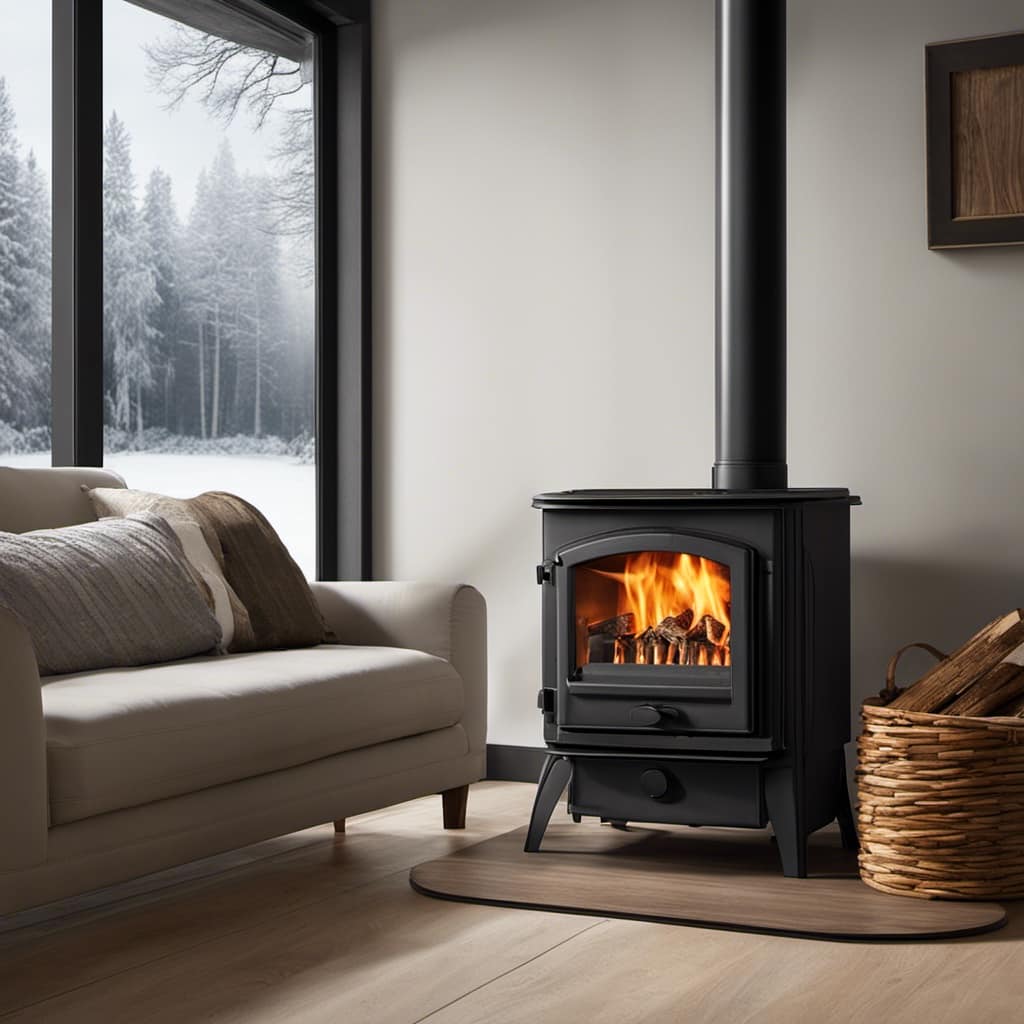
Proper insulation is also crucial for maintaining consistent temperatures in a wood stove. Insulating materials, such as firebricks, help to keep the heat inside the stove, preventing it from escaping and ensuring more efficient combustion. Without proper insulation, the stove may struggle to reach and maintain the desired temperature.
Outside weather conditions also play a significant role in wood stove temperature. Cold weather can increase the demand for heat, causing the stove to work harder to maintain the desired temperature. Windy conditions can also affect the stove’s performance by increasing the rate of heat loss through the chimney.
Understanding Optimal Temperature Range for Efficient Burning
To ensure efficient burning, it’s important to understand and maintain the optimal temperature range for the wood stove. The combustion process of a wood stove relies on achieving the right temperature for complete combustion.
When the temperature is too low, incomplete combustion occurs, resulting in the production of harmful byproducts like carbon monoxide. On the other hand, if the temperature is too high, it can lead to excessive heat and damage the stove. Therefore, finding the ideal temperature range is crucial.
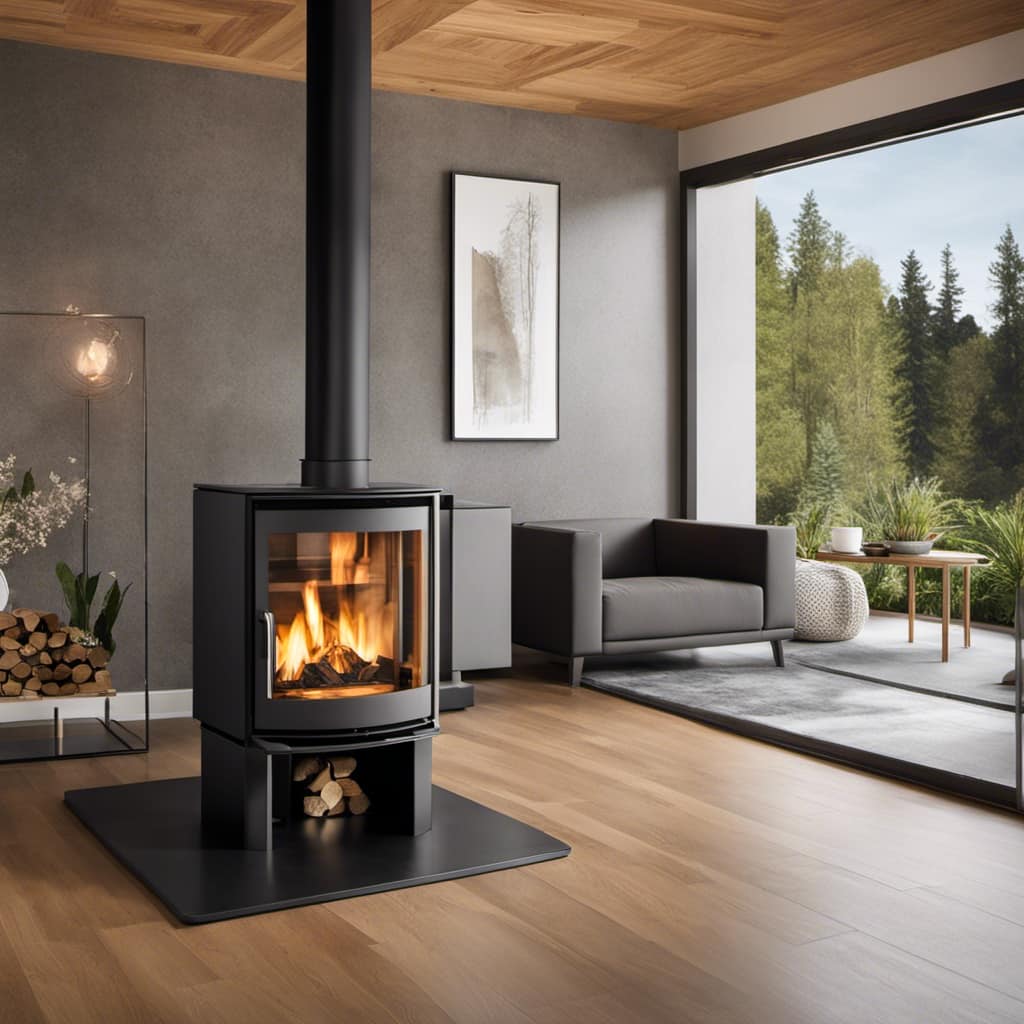
This can be achieved by properly ventilating the wood stove. Adequate airflow allows for a steady supply of oxygen, which is necessary for combustion. It also helps to regulate the temperature and prevent the accumulation of harmful gases.
Understanding the combustion process and the importance of proper ventilation will help maintain a safe and efficient wood stove operation.
Tips for Maintaining the Ideal Temperature in Your Wood Stove
I can adjust the damper to control the temperature and ensure optimal burning in my wood stove. Maintaining the ideal temperature in a wood stove is crucial for both safety and maximizing heat output.
Here are three tips to help you achieve this:
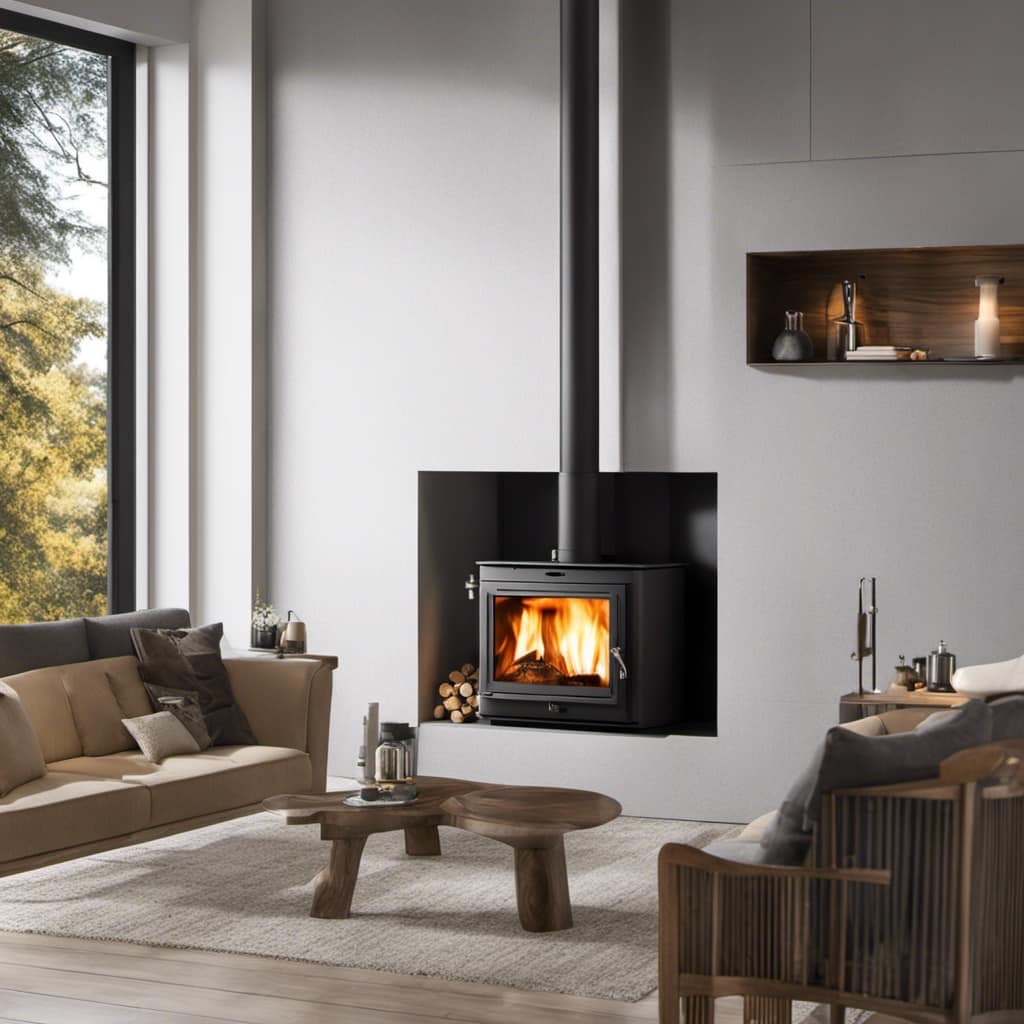
Monitor the temperature: Use a stove thermometer to keep track of the temperature inside the stove. This will help you determine if adjustments need to be made.
Adjust the damper: The damper controls the flow of air into the stove. By opening it wider, more oxygen will be supplied to the fire, increasing the heat output. Closing it partially will reduce the airflow, lowering the temperature.
Use the right fuel: Different types of wood burn at different temperatures. Hardwoods like oak and maple burn hotter and longer compared to softwoods like pine. Use the appropriate wood for your desired temperature.
Common Mistakes That Can Affect Wood Stove Temperature
One common mistake that affects wood stove temperature is using wet or unseasoned wood. This can result in lower heat output and difficulty maintaining a consistent temperature.
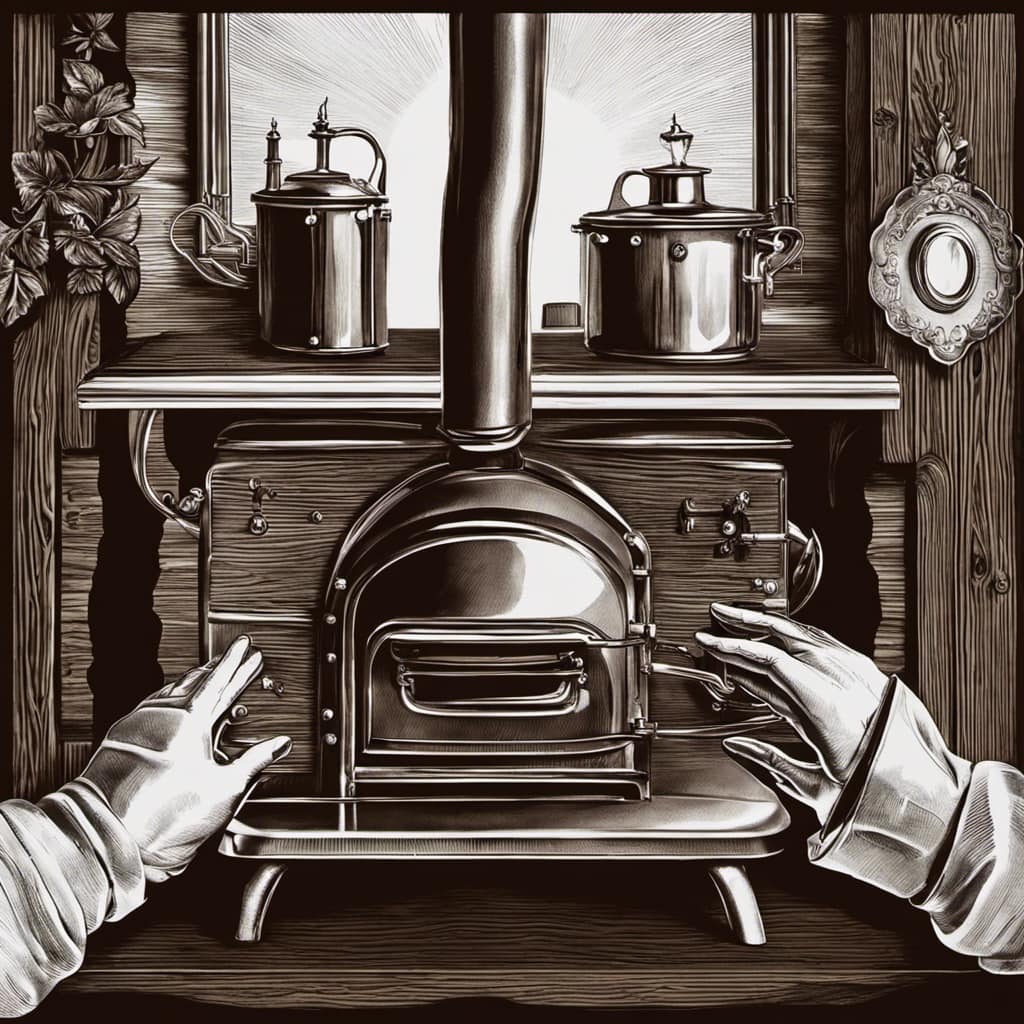
Wet or unseasoned wood contains a high moisture content. This means that a significant amount of energy is being used to evaporate that moisture instead of producing heat. As a result, the efficiency of the wood stove is reduced, and it becomes harder to achieve and sustain the desired temperature.
To troubleshoot this issue, it’s important to use properly seasoned firewood with a moisture content of around 20%. This will ensure that the wood burns efficiently and produces the desired heat output.
Additionally, ensuring that the wood stove is properly ventilated is crucial. This means making sure that the air intake and damper settings are adjusted correctly. Proper ventilation can help maintain a consistent temperature and prevent the stove from overheating or underperforming.
Adjusting Temperature for Different Wood Stove Uses
When using a wood stove, it’s important to adjust the temperature accordingly for different uses, such as cooking or heating. Controlling the temperature for cooking on a wood stove requires precision and understanding of the stove’s capabilities. Here are three key factors to consider:
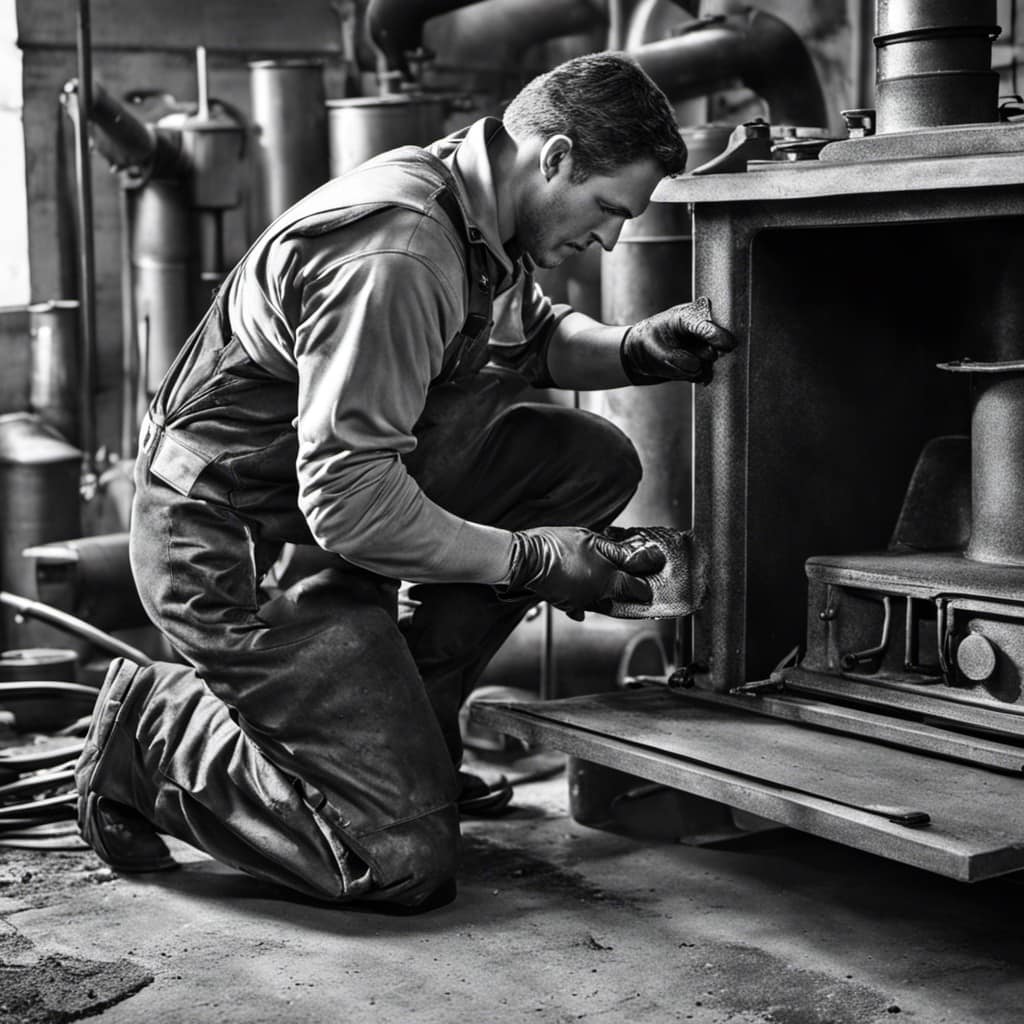
Fuel type: Different types of wood burn at different temperatures. Hardwoods, like oak or maple, burn hotter and longer, while softwoods, like pine or cedar, burn faster but at a lower temperature. Adjust the amount and type of wood accordingly to achieve the desired cooking temperature.
Air intake: The air intake controls the amount of oxygen that fuels the fire. For cooking, a lower air intake setting is usually preferred to maintain a consistent temperature. Experiment with adjusting the air intake to find the right balance.
Utensils and placement: The type of cookware and its placement on the stove can affect the temperature. Thicker pots and pans distribute heat more evenly, while placing them closer or farther from the fire can increase or decrease the temperature.
Achieving the right temperature for heating a small space requires a similar approach:
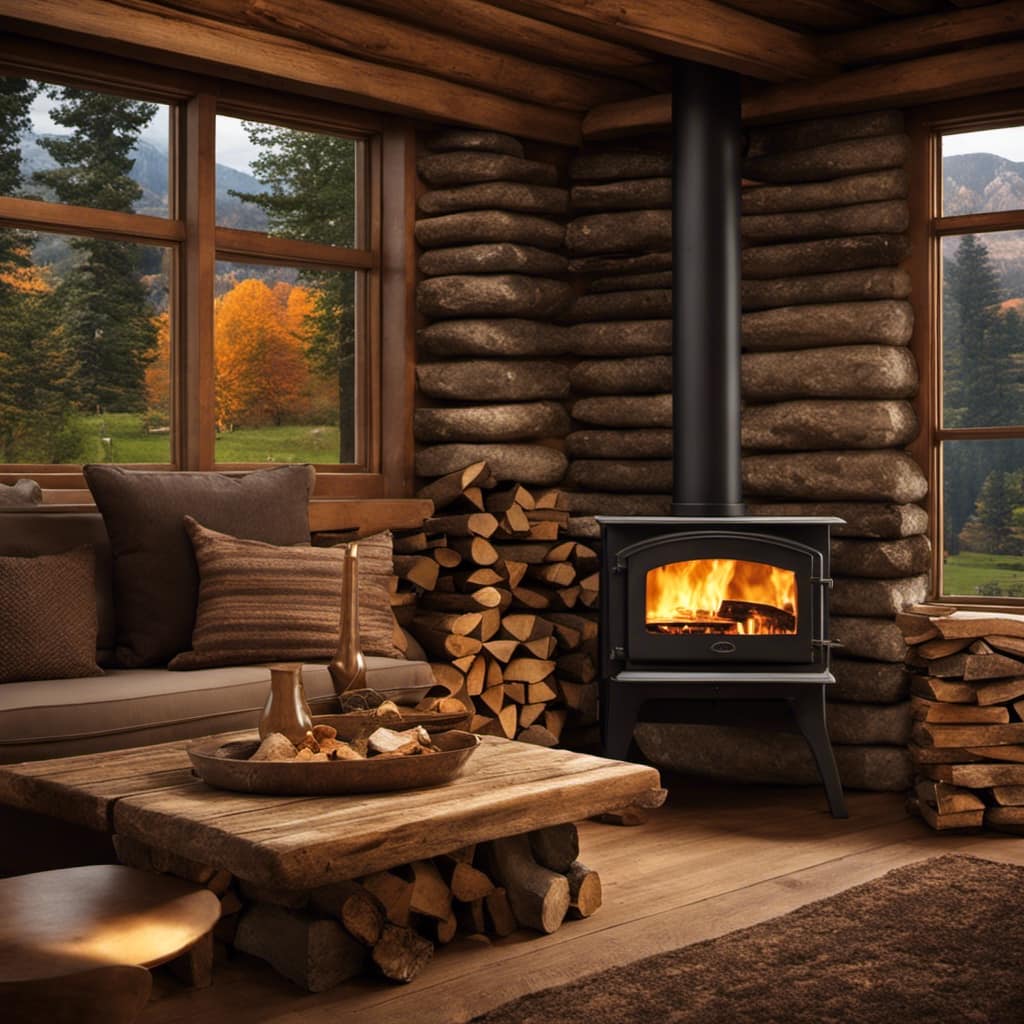
Draft control: Adjusting the draft control on the stove controls the flow of air and heat. Closing the draft control slows down the burn rate, resulting in a lower temperature, while opening it increases the burn rate and temperature.
Insulation: Proper insulation of the space helps retain heat and maintain a consistent temperature. Ensure that windows, doors, and other openings are properly sealed to prevent heat loss.
Size of fire: For heating, a small, steady fire is often sufficient. A larger fire may produce excess heat, causing the space to become uncomfortably warm. Adjust the size of the fire by adding or removing wood as needed.
Is the Ideal Temperature for a Wood Stove the Same for Different Brands Like Lopi?
When it comes to the ideal temperature for a wood stove, each brand, like Lopi wood stoves, may have specific recommendations. It’s essential to refer to the manufacturer’s guidelines for the optimal lopi wood stove temperature to ensure safety and efficiency. Different brands may have slightly different recommendations based on their specific designs.
Frequently Asked Questions
Can I Use Any Type of Wood in My Wood Stove to Achieve the Ideal Temperature?
I can use different types of wood in my wood stove to achieve the ideal temperature. Factors such as moisture content, wood species, and stove efficiency can affect the temperature.
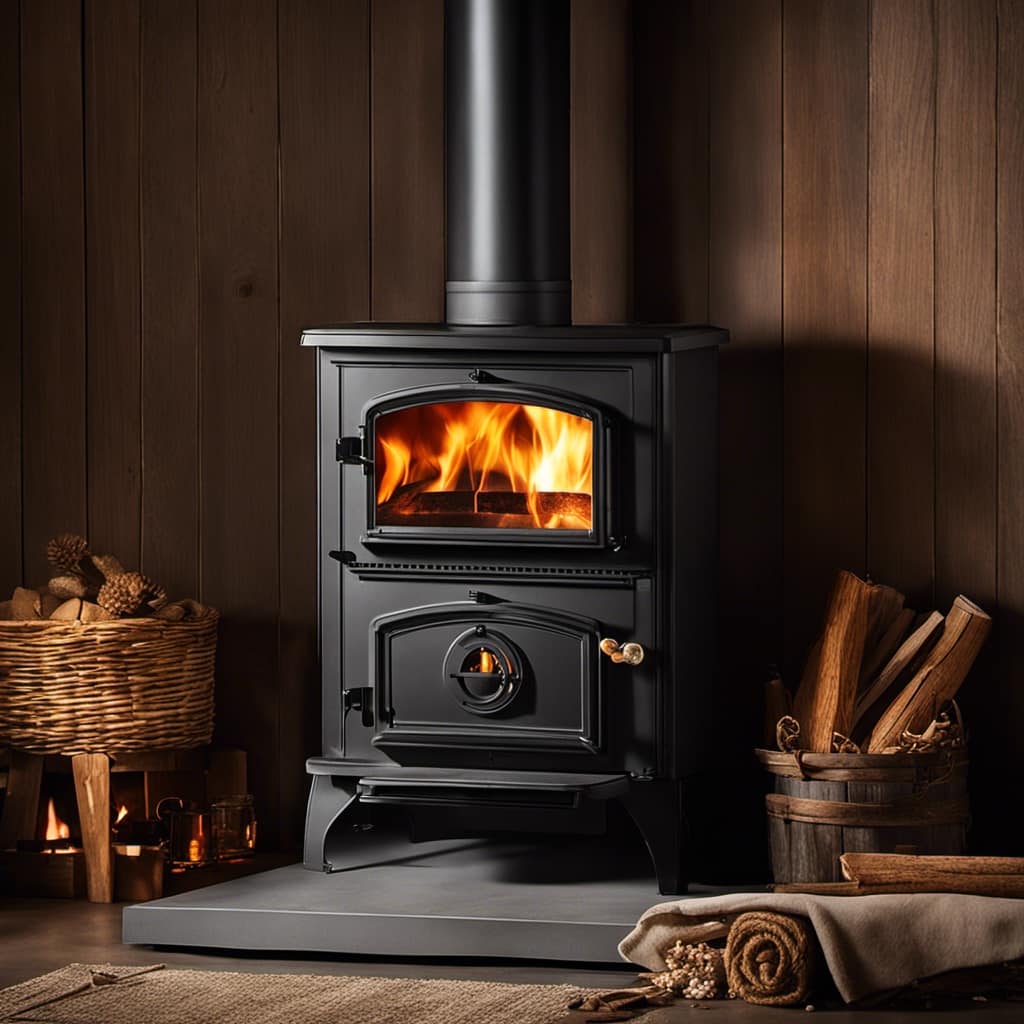
How Often Should I Clean My Wood Stove to Maintain the Ideal Temperature?
To maintain the ideal temperature in my wood stove, I need to clean it regularly. How often should I clean it? Also, can I use any type of wood to achieve the ideal temperature?
Can I Use a Wood Stove to Heat My Entire House, or Is It Only Meant for Supplemental Heat?
Using a wood stove as my primary heat source was a decision I made without considering its limitations. The advantages of its cozy warmth are outweighed by the disadvantages of inefficiency and reliance on wood.
Are There Any Safety Precautions I Should Take When Trying to Achieve the Ideal Temperature in My Wood Stove?
When it comes to achieving the ideal temperature in a wood stove, there are some important safety precautions to keep in mind. Proper maintenance and cleaning are key to optimal temperature control.
Can I Adjust the Temperature of My Wood Stove Based on the Type of Wood I Am Using?
Yes, you can adjust the temperature of your wood stove based on the type of wood you are using. Different wood types have different burning rates and heat outputs, allowing you to control the temperature to suit your needs.
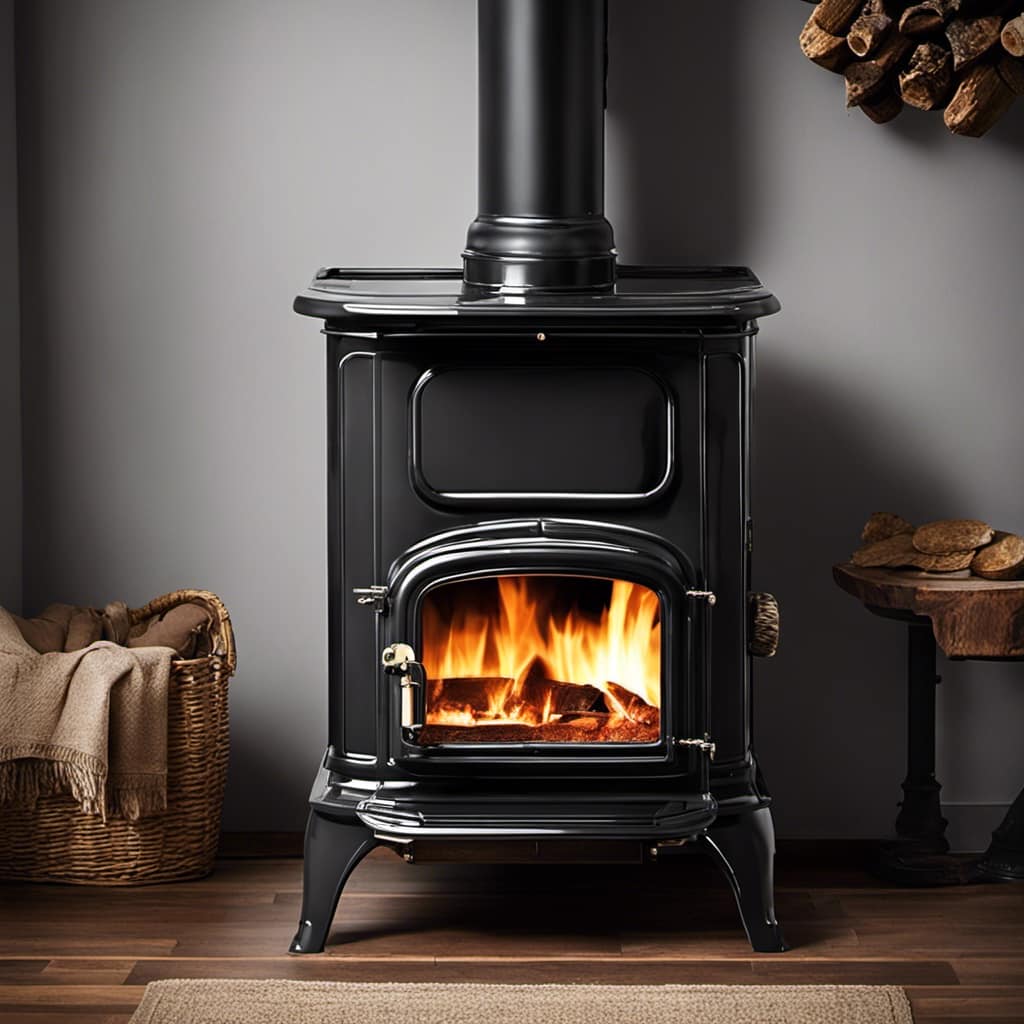
Conclusion
In conclusion, maintaining the ideal temperature for your wood stove is crucial for efficient burning and optimal performance.
Factors such as air supply, wood type, and stove design influence the temperature range.
By understanding these factors and following tips for temperature maintenance, you can enjoy a cozy and efficient wood stove experience.
Remember, as the saying goes, ‘A well-tended fire warms the soul and kindles joy in the heart.’
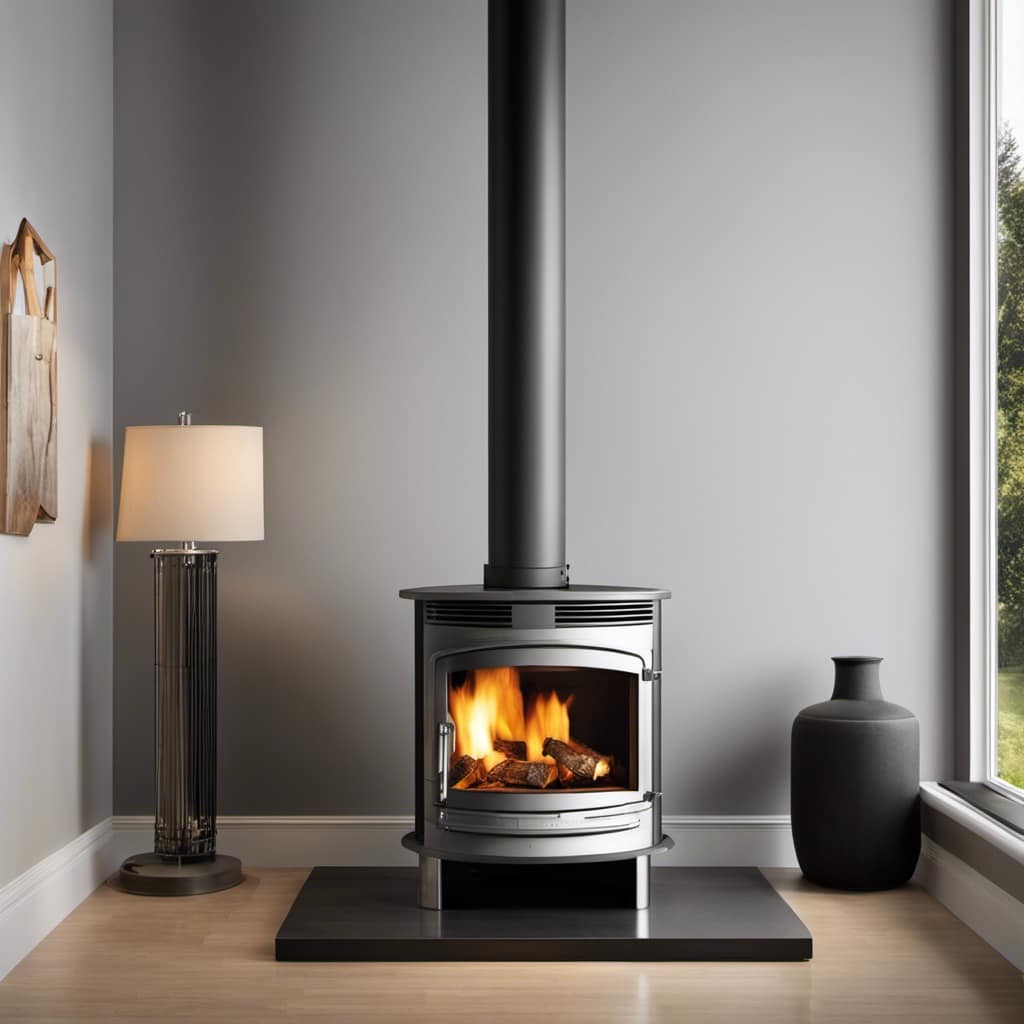
So, keep your wood stove at the ideal temperature and let the warmth and comfort fill your home.
Growing up surrounded by the vast beauty of nature, Sierra was always drawn to the call of the wild. While others sought the comfort of the familiar, she ventured out, embracing the unpredictable and finding stories in the heartbeat of nature.
At the epicenter of every remarkable venture lies a dynamic team—a fusion of diverse talents, visions, and passions. The essence of Best Small Wood Stoves is crafted and refined by such a trio: Sierra, Logan, and Terra. Their collective expertise has transformed the platform into a leading authority on small wood stoves, radiating warmth and knowledge in equal measure.





